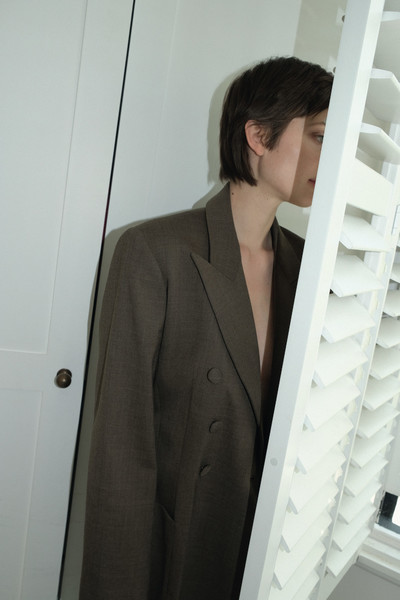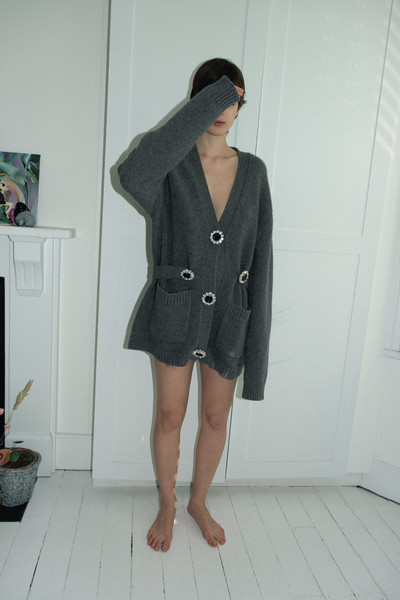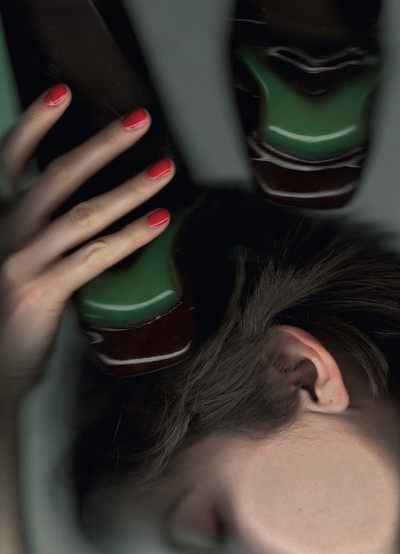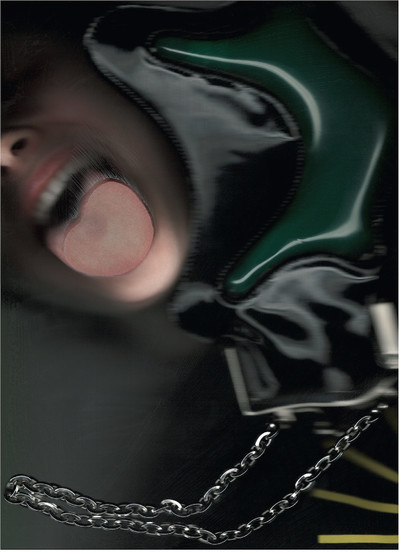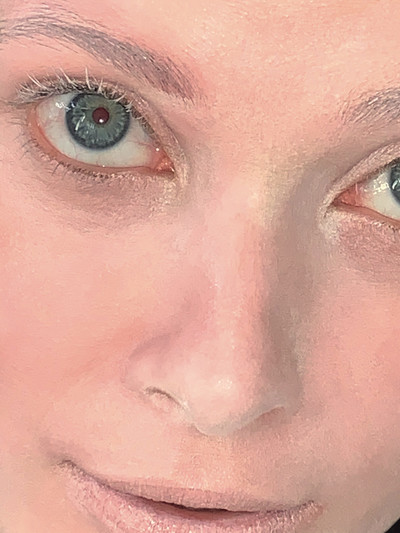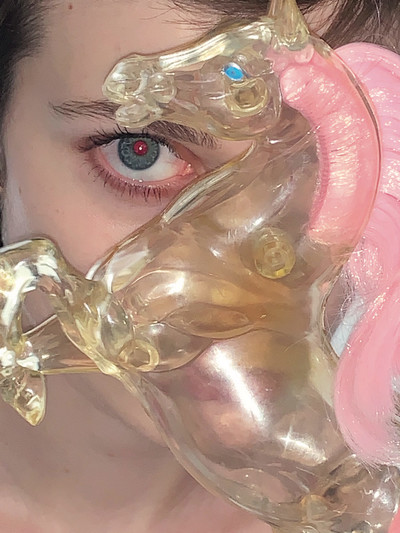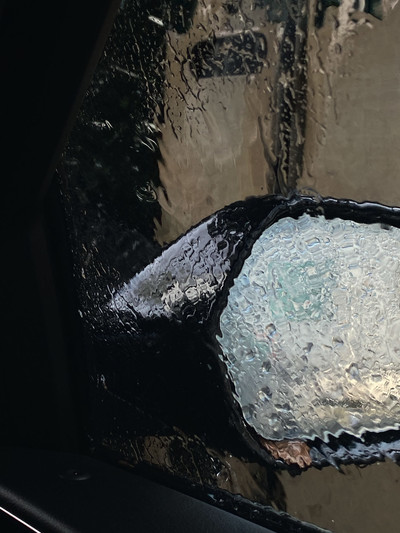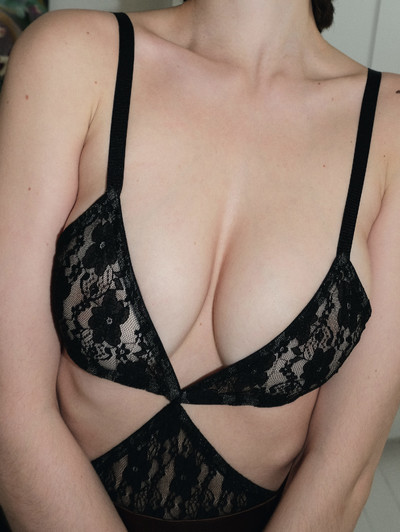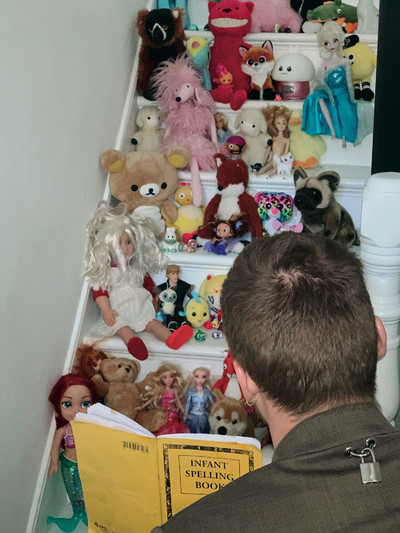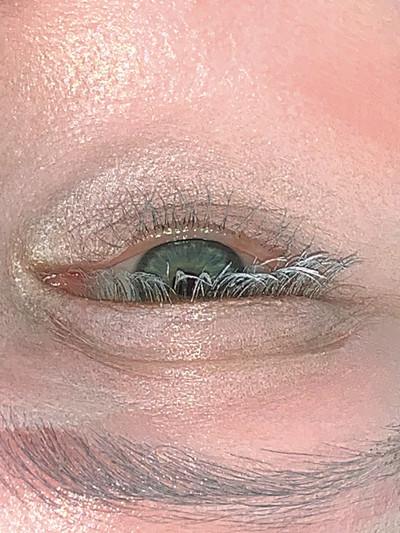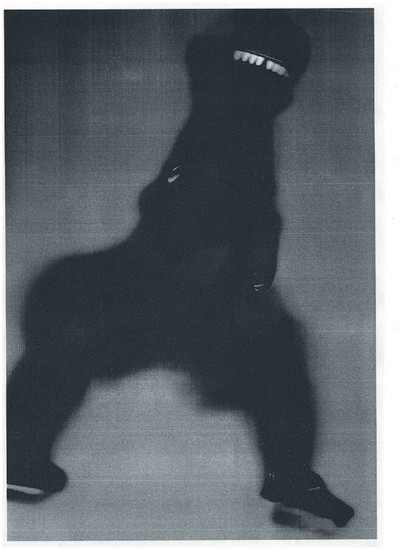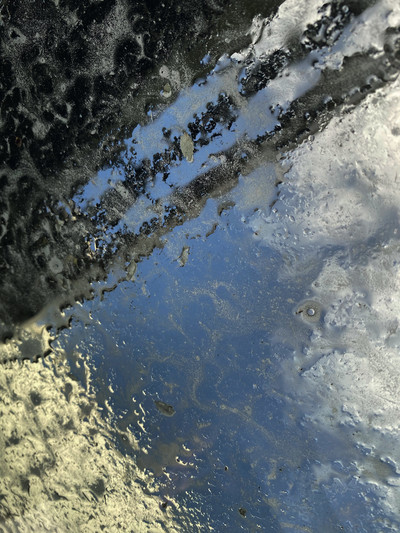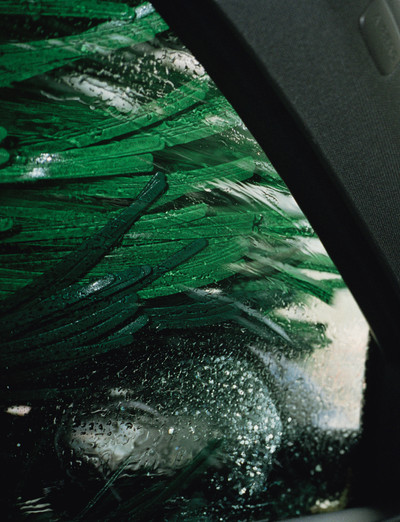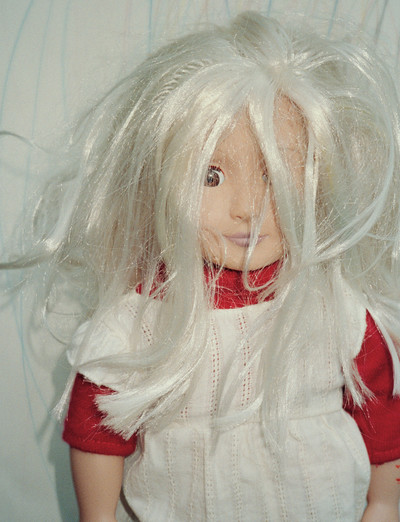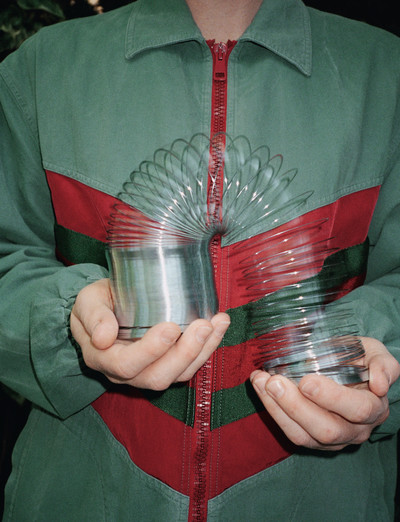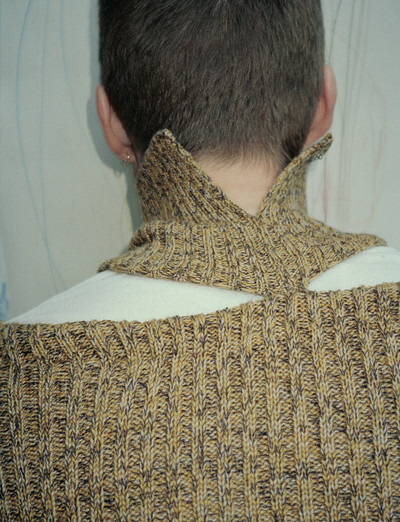In early April, we sent the following request to 17 leading art directors working in the fashion industry.
We’d love for you to conceptualize and deliver a fashion portfolio with your available means and from your current location. You would be entirely free to work with any partners, and to select any brand(s) you would like to feature in the portfolio. The exercise is one that innately addresses the current restrictions on collaborative work.
Just prior to sending out that message, we had asked ourselves a question that remains as bewildering today as it was when fashion’s capitals were first entering lockdown: in a world of Covid-19 restrictions, how can you create fashion imagery that often requires in-person collaboration, international travel, shipping clothes, and an often significant budget?
We decided to let the industry’s art directors work that question out for us. In doing so, commissioning a collective body of work that feels both adapted to this uniquely curious moment and which acts as a mirror to its creators. Each of the portfolios presented over the following pages reveals the personality, idiosyncrasies, background, working processes, address book, and creative impulses of the participating art director(s).
Interview by Thomas Lenthal
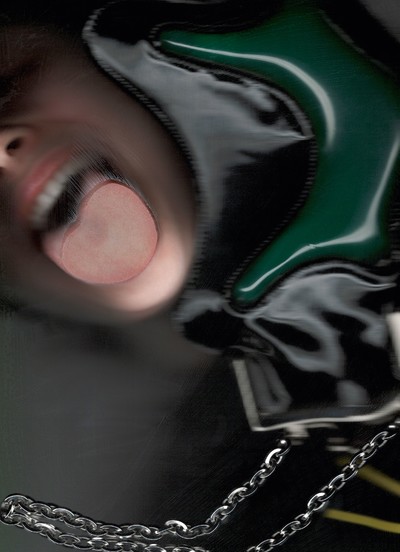
In early April, we sent the following request to 17 leading art directors working in the fashion industry.
We’d love for you to conceptualize and deliver a fashion portfolio with your available means and from your current location. You would be entirely free to work with any partners, and to select any brand(s) you would like to feature in the portfolio. The exercise is one that innately addresses the current restrictions on collaborative work.
Just prior to sending out that message, we had asked ourselves a question that remains as bewildering today as it was when fashion’s capitals were first entering lockdown: in a world of Covid-19 restrictions, how can you create fashion imagery that often requires in-person collaboration, international travel, shipping clothes, and an often significant budget?
We decided to let the industry’s art directors work that question out for us. In doing so, commissioning a collective body of work that feels both adapted to this uniquely curious moment and which acts as a mirror to its creators. Each of the portfolios presented over the following pages reveals the personality, idiosyncrasies, background, working processes, address book, and creative impulses of the participating art director(s).
‘As a fashion art director,
I generally just ignore the clothes.’
A conversation with
Christopher Simmonds and
Larissa Hofmann,
4 May 2020.
Thomas Lenthal: Thanks for the portfolio; it looks really great. Can you talk me through it?
Christopher Simmonds: When you asked us to do it, I thought about the fact that we were stuck at home, and I remembered the holiday we went on last year to Indonesia. We were on this super-remote island and Christopher Kane happened to be there – which was kind of mad because his studio is at the top of my road in London. You travel halfway round the world to escape everything and then your neighbour is literally in the room next to you. So I thought it was a nice link to do something with him, when one of the last times we saw him was on the other side of the world. That’s where it all started.
Thomas: So you got in contact with him?
Christopher: I asked if we could have some clothes, he said yes, and then with Larissa, we thought about what we had in the house.
Larissa Hofmann: There’s a naive approach to it. The whole thing feels quite playful, but not too much, and it’s also quite colourful. So even though we are restricted, there is so much to do if you use the things you have and just think quite naively.
Christopher: It also features our one exciting adventure from the lockdown. One of the only times we left the house was when we went to the car wash, and we had to queue for an hour because it was the only one open. Then we parked the car where it had been parked and it got covered in blossom straight away, so it was a totally redundant exercise.
Thomas: Do you think restriction itself is a useful or even necessary thing when it comes to creative work?
Larissa: I sometimes feel it is quite good to do something within certain restrictions, because you have to work with it and think creatively. If you are able to do that, good things can happen. Sometimes, when you have all the freedom in the world and you can use anything, it is harder.
Christopher: Having to do this project, we did things that we wouldn’t normally do, like having me in the pictures, and now we are having this video call, when I am normally behind the scenes. And we did stuff in the house, which we wouldn’t normally do, and we used techniques that we wouldn’t normally use, like shooting on the phone, or using scanners and photocopiers.
Thomas: I would say that the portfolio looks really considered and attractive. The imagery in general is extremely seductive, even if it is fairly lo-fi, low budget.
Larissa: It’s very low budget!
Thomas: But it’s good, you know, because to go from huge productions where you can do anything and have nothing, and then create something that looks good from nothing.
Christopher: The other thing was that we had time to work on it. We didn’t just do it in one day; we took a few days. That allows you to reflect on things, and we did other things. We did the pictures of Larissa’s face right at the end. We had already got everything, and then we thought it would be nice to do some face-paint thing to link through. There is a very loose narrative in there, somehow.
Thomas: What title did you give the portfolio?
Larissa: We thought about ‘Hoppe, hoppe Reiter’, this very basic German children’s song about a horse that you sing holding a child on your lap, who then falls off. So it’s ‘Hoppe, hoppe Reiter’.
Christopher: We’d like to keep it in German.
Thomas: Since you mentioned it, I know that – with one of your clients, at least – you’re accustomed to humongous productions, right? And here it’s interesting that within the boundaries of something so intimate and so low budget, you seem to be equally at ease and enjoying yourself just as much, if perhaps in a different way. In your eyes, what constitutes a good fashion portfolio or image, and has it evolved during your career?
Christopher: I always try to have a story behind what we do, whatever it is; the thing I hate to do the most is just the plain shoot in a studio against a studio wall. There’s a few of those in my portfolio, but as a fashion art director I generally just ignore the clothes, if that makes sense. The ideas that we come up with are all based around a story about something, no matter how oblique or minimal, and I guess that is what draws me to the people I work with. Sometimes it is interesting to work with people who would just do a studio shoot and push them into doing something else; sometimes it works, and sometimes it doesn’t. I also like taking risks, so when I was at Dazed, we would always work with people who wouldn’t historically work for that publication, or give them shoots to do involving things they’ve never done before. We did something with an artist and Björk, and he’d never taken a photo before, so his first commission was Björk, which I thought was
kind of good. Sometimes the risks don’t pay off, but if you don’t try, you’re never going to learn.
‘I remember counting down the days until I could go and buy The Face, and being annoyed because I’d have to wait all day at school to get it.’
Thomas: For you, a good portfolio, whether it be something you’re involved with or something that you are looking at, needs to have some kind of interesting narrative background?
Christopher: Yes, some emotional connection. There are certain photographers who I think photograph people like robots; there is no warmth, humanity or humour in it. I’m not drawn to that kind of thing. But I’m not naming any names!
Thomas: [Laughs] Was there a defining reference, image, moment, or person in your teenage years that looking back you can see as having been instrumental in projecting you towards a career in fashion and art direction?
Christopher: I always wanted to be the art director of The Face when I was a kid, and I remember the first issue I bought had Karen Elson on the cover with some weird devil horn McQueen thing. I was on holiday with my parents and I think I read it cover to cover like 20 times on that holiday. It just started from there. Pretty clichéd reference, The Face, but it was very good. I was 12 or 13. In Birmingham, where I’m from in the UK, they used to sell it at most newsagents, and I remember counting down the days of the month until I could go and buy it. And I remember going into the newsagents in the morning and it not being on sale, and being annoyed because I’d have to wait all day at school to get it.
Thomas: Another British art director of your generation also cited The Face. Perhaps it is specific to your generation in Britain.
Christopher: It’s also because it was a cultural magazine and gave us an insight into what was going on outside of our little situation in Birmingham, or wherever that other person was.
Thomas: Can you give me an example of what you find most intuitive in your work, and what you tend to overthink?
Christopher: A lot of the time, I think back to the films I watched in the previous week and there will be a scene in a film that I think would be cool as an idea for a job or something, and I make a mental note of it as something we can try and be inspired by. What I find difficult is when the client doesn’t really know what they want, but they want ideas, so we give them countless ideas and then they still don’t know what they want. And I’m, like, ‘It’s cool that you don’t like anything, but is there anything you do like, so that we can gear it more towards what you want?’ And they are, like, ‘No, I don’t know.’ That is pretty frustrating.
Thomas: To you, the conversation with the client is kind of essential?
Christopher: I think so. No matter how vague, they are always important. With Alessandro [Michele], he really always knows what he wants, which makes it very easy to move things forward, and the feedback is always very precise as well. But other people, they just don’t know. And I’m, like, ‘Give me any insight at all into what you are looking for and we can do it.’ Sometimes even when they give us ideas, we do them and do them again, and it still doesn’t go anywhere.
Thomas: That is not a good conversation then.
Christopher: That’s what I mean: some people don’t want to have the conversations.
Thomas: It’s impossible, right? So, did you always strive to be different from a young age and do you still want to be different today? Is it a mindset or a method?
Christopher: I don’t really think I am so different! I always try not to do what everyone else is doing. It doesn’t matter if someone has done it in the past, because everything’s been done anyway. People get so het up, like, ‘Oh my God, this image has been done before’, or whatever, but everything has been done before. We’re just adding a new take on it, I guess. I just want to do things that interest people, and I hate repeating things that have been done over and over again. I try to change things. I’ve heard that some people just have a quick conversation before a shoot, but before we do something, everything is all planned out – like, this is what this shot is going to look like; this is the music for the video; this is how it is going to be roughly edited – because I think that clients making a big investment are happy to take a risk on an idea as long as they know what they are going to get at the end of it. You can be risky, as long as you have everything planned.
‘Alessandro [Michele], always knows what he wants, which makes it very easy to move things forward, and the feedback is always very precise as well.’
Thomas: Are you saying it’s pure execution?
Christopher: Maybe.
Thomas: Your approach to something editorial would be less planned?
Christopher: When we do PRINT magazine, for example, everybody has total freedom. The reason Fran [Burns] and I started that magazine was because with her working at Vogue and me at Dazed, we were well-trained in running magazines supposed to make money. To do that, they had to adhere to certain rules, which were kind of stifling. We started PRINT to give people the freedom that we thought magazines like that should have; magazines like System, where you have a lot of freedom. You still need to appease people who are injecting money into these projects, but I think you need some freedom within that.
Thomas: I want to ask a question that has to do with Larissa, as well. I know your work, obviously, and I like it very much. You don’t strike me as a photographer who necessarily works from a reference or executes something. Your work seems a lot more organic, more free-floating. It feels more intimate somehow.
Larissa: Maybe one thing is that Chris’s responsibilities are much bigger and he has much more freedom when it comes to budget, whereas I’ve just started out, so I have to be quite creative and know what I can do with my own little things in my own little world. What he said about the image being emotional, that is important to me, too. Even if it is a still life or with colour, it has to say something in a certain way. I do have references; maybe I just hide them well. That is what we argue about sometimes: you say it doesn’t matter if it has already been done, but I don’t want to copy another image like that.
Christopher: It’s not about copying!
Larissa: I would rather have 100 influences, collect a million things and pick out the things that I like and really make my own thing out of them. Maybe it is different for a photographer than it is for an art director. If I start out like this, it turns into something completely different at the end, even if I have references. I hate delivering pictures that don’t feel original.
Thomas: Chris, in an ideal scenario, do you prefer your work to appeal to a niche demographic or are you aiming to appeal to a wider audience?
Christopher: I would rather inspire the people who don’t give a shit about us. When we did the Gucci Beauty launch last year, I got a message from a girl I went to school with, who I hadn’t talked to for 20 years, and she was, like, ‘Oh wow, did you work on this thing?’ It’s really interesting when people who have no influence on the job have a reaction; people we don’t need to appease. When people outside that circle feel something, then that is a job well done.
Thomas: That’s good. Which fashion industry figure – living or dead – do you most admire and why?
Christopher: Jefferson [Hack] is a really great person. He is so supportive of everyone who worked at Dazed and AnOther, past or present, and he always just wants people to do their best. They could have changed Dazed a million times, but he has stuck to his guns about what he wanted for the company. And look at the people who have worked there over the years; it’s been pretty prosperous how many people’s careers were launched there. There’s also David Sims. His total commitment to image-making is something to behold; he’s always striving to push or improve or challenge. He never settles. Many years ago he told me he always gets restless in shoots, struggling to shoot the same kind of image multiple times. I sympathize with that feeling – it’s informed a lot of my work.
Thomas: What does success look like for you?
Christopher: Like I said before, it is always nice to hear people who aren’t involved in a project react. Also, I always want to keep the next generation inspired. Another reason we started PRINT was for that: every issue we lose so much money because it costs so much, but I want it to be a price that kids or students can buy. We failed miserably with the last one and no one bought it, but all the previous ones we priced nice and cheap for what they were. And the people who got it seemed to really enjoy it. It is always nice to hear messages on Instagram with kids who are like, ‘This is amazing, thank you for doing this.’
Thomas: Describe a professional disappointment and what it taught you.
‘A girl I went to school with messaged me, ‘Wow, did you work on Gucci Beauty?’ It’s interesting when people who have no influence on the job react.’
Christopher: Sometimes you think, ‘I really want to work with this client’, and then you do it and although you work with someone amazing, it just isn’t what you had in your head. You end up wishing you hadn’t gone through the whole process.
Larissa: And what did you learn?
Christopher: Every time there is a new job or a new client, I go into it with a positive outlook. Sometimes it doesn’t last! So that’s what I’ve learned: to try every time.
Thomas: When we put together the roster of the creative directors we wanted to talk to, it was really difficult to find a female creative director; there are very few around. Why do think that is?
Christopher: I don’t know. There are far fewer in the studio with me, as well. And with one of the women there, I’ve said, ‘Look, we need to find more women.’ But why that is, I don’t know.
Larissa: Maybe because it is still a male-ruled industry; I don’t know.
Thomas: Among the more promising up-and-coming young fashion photographers, there are now far more female than male photographers. But hardly any women in the creative direction. I don’t know, maybe there’s something…
Christopher: There are a few. I mean, there’s Ronnie [Cooke New-house]. And Veronica [Ditting] at The Gentlewoman.
Larissa: Veronica is amazing. It was really good to work with her, a female art director; the conversation was so different. Her seeing and thinking and approach, but I think that is also her character.
Thomas: Plus, she is German, like you! What do you now know about the fashion industry that you didn’t when you were first entering it?
Christopher: Everything’s probably going to change in the next six months, but even then the most important thing will be my team. I’ve learned that fashion is intrinsically about people and I couldn’t do this without everyone in the studio and by my side on set.
Thomas: Right. As things gradually return to some level of normality, will your impulse be to explore notions of fantasy and escapism, or do you think you’ll double-down on realism?
Christopher: We are actually working on an idea that is just a fantasy thing, so whether or not the client approves it, that is what I am leaning towards; like, more out there and weird. In six months’ time, people are going to be pretty fed up with looking at people in their own homes and will want to have some kind of escape from everything.
Thomas: Are you itching to get back to the processes of pre-Covid-19?
Christopher: Everything was so hectic before; I think it will be interesting to see how it calms down. I don’t know, it might go back to being even worse, but the travel and the excess might be put on pause for a bit. It felt like you could do anything for anyone and people would by and large try to make it happen. But there will be more reserve now. I’m not sure how it will work, trying to do fantastical ideas in a more reserved, low-key way!
Thomas: There will be less extravagance, maybe a measure of sanity.
Christopher: Which is not a bad thing.
Thomas: Perhaps, probably. Do you guys work together all the time?
Christopher: Well, we’ve done a few jobs together. Larry did a shoot in the last issue of PRINT, which was a playing-cards thing and was pretty cute. Then we did this thing for you and we did a picture for Vogue just beforehand. Larissa We do things together only on commercial jobs, so the thing we did for you just now was quite nice. It was nice to work freely together without having a client telling us what to shoot. Shoot the shoes!
Christopher: Shoot the watch!
Thomas: Where’s your office? It looks great.
Christopher: It’s in Shoreditch, on the canal. Everybody is working from home, so there are no computers. It looks nice without the computers, but it would look even nicer with the people. They’ll be back one day.
